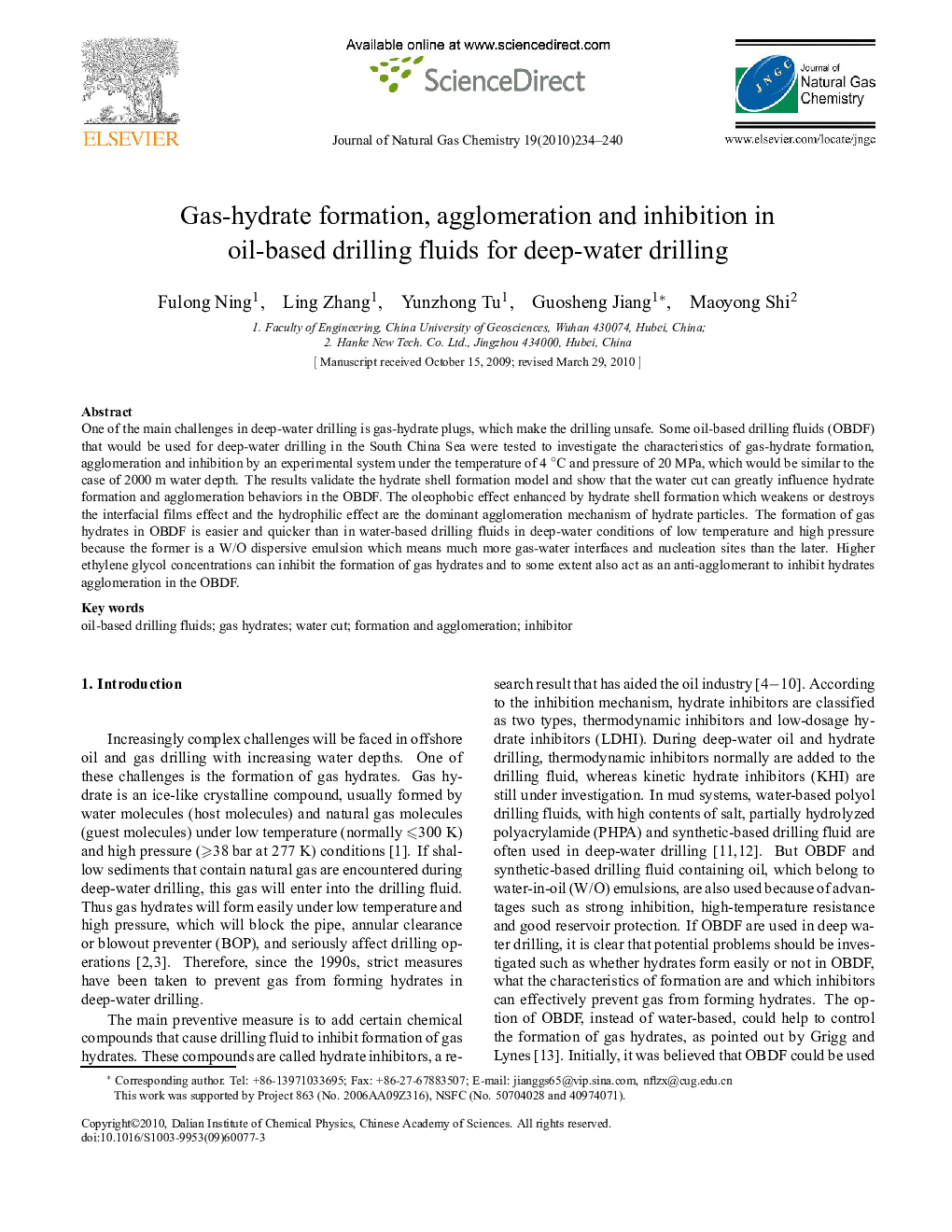| کد مقاله | کد نشریه | سال انتشار | مقاله انگلیسی | نسخه تمام متن |
|---|---|---|---|---|
| 71560 | 48982 | 2010 | 7 صفحه PDF | دانلود رایگان |

One of the main challenges in deep-water drilling is gas-hydrate plugs, which make the drilling unsafe. Some oil-based drilling fluids (OBDF) that would be used for deep-water drilling in the South China Sea were tested to investigate the characteristics of gas-hydrate formation, agglomeration and inhibition by an experimental system under the temperature of 4 °C and pressure of 20 MPa, which would be similar to the case of 2000 m water depth. The results validate the hydrate shell formation model and show that the water cut can greatly influence hydrate formation and agglomeration behaviors in the OBDF. The oleophobic effect enhanced by hydrate shell formation which weakens or destroys the interfacial films effect and the hydrophilic effect are the dominant agglomeration mechanism of hydrate particles. The formation of gas hydrates in OBDF is easier and quicker than in water-based drilling fluids in deep-water conditions of low temperature and high pressure because the former is a W/O dispersive emulsion which means much more gas-water interfaces and nucleation sites than the later. Higher ethylene glycol concentrations can inhibit the formation of gas hydrates and to some extent also act as an anti-agglomerant to inhibit hydrates agglomeration in the OBDF.
Journal: Journal of Natural Gas Chemistry - Volume 19, Issue 3, May 2010, Pages 234-240